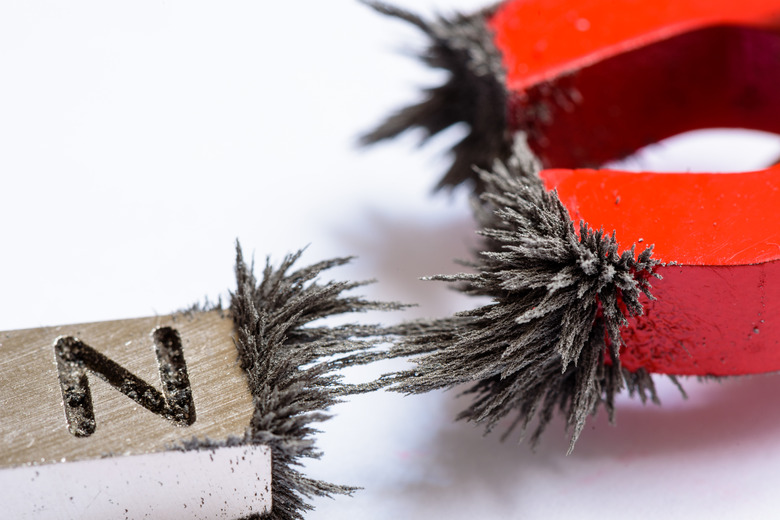How To Demagnetize Steel
Some metal elements, such as cobalt, iron and nickel, are magnetic, meaning they have spontaneous internal magnetic fields. Steel is not an element itself, but an alloy made of different elements, mainly iron and carbon. Iron is a ferromagnetic material, meaning it is permanently magnetic. Therefore, the magnetic properties of steel depend on how much iron it contains. Different demagnetization techniques can reduce the magnetization of steel to zero.
TL;DR (Too Long; Didn't Read)
Demagnetizing steel removes its permanent magnetic field. Steel can be demagnetized with a commercial demagnetizer, a hammer or by heating it to a very high temperature, known as the Curie temperature.
Use a Commercial Demagnetizer
Use a Commercial Demagnetizer
A demagnetizer, also known as a degausser, is an electric solenoid (coil) powered by alternating current. It comes in many forms to suit all industrial requirements, including tool, handheld, pen style and table type. In all cases, the current produces a magnetic field. The magnetic field strength and polarity alternates, just like the current does. When the steel item is within an inch or two of the demagnetizer's surface, press the trigger button to start the demagnetization process. If the steel is still magnetized, you can test this by trying to pick up a small metal object with the steel item, like a paperclip, repeat the process.
Use a Hammer
Use a Hammer
A small piece of steel can be struck with a hammer to demagnetize it. Place the item on a hard, secure, non-metallic surface and hit it sharply a few times with a hammer. The shock of being struck transmits energy through the steel, which rearranges the order of its atoms and lowers its magnetic output. This must be done perpendicular to the Earth's magnetic field or in an East to West direction. Test the magnetism of the steel item and repeat if necessary.
Heat to Curie Temperature
Heat to Curie Temperature
All ferromagnets have a Curie temperature, the temperature where the ferromagnetic property disappears due to thermal agitation. The Curie temperature of iron is 770 degrees Celsius or 1,417 degrees Fahrenheit. At this temperature, steel's atoms vibrate strongly enough to demobilize tiny magnetic zones called "domains" in the material. Heating steel to its Curie temperature must be done in a furnace placed on a strong, heatproof surface in a well-ventilated area. Place the steel item inside the furnace and set the Curie temperature. When the furnace reaches the set temperature, leave it there for at least five minutes, then turn the furnace off, and let it cool to room temperature.
References
- UCSB ScienceLine: How is it That a Magnetic Material Attaches to a Metal?
- Georgia State University: Ferromagnetism
- Kanatec: Demagnetizers
- Boston University: Ferromagnetism
- Exploratorium: Curie Point
- PhysLink.com: Do Magnets Ever Lose Their Magnetism?
- Montana State University: Hammer an Iron Bar
- Georgia State University: Magnetic Field of the Earth
Cite This Article
MLA
Gillespie, Claire. "How To Demagnetize Steel" sciencing.com, https://www.sciencing.com/demagnetize-steel-12741/. 10 April 2018.
APA
Gillespie, Claire. (2018, April 10). How To Demagnetize Steel. sciencing.com. Retrieved from https://www.sciencing.com/demagnetize-steel-12741/
Chicago
Gillespie, Claire. How To Demagnetize Steel last modified March 24, 2022. https://www.sciencing.com/demagnetize-steel-12741/
